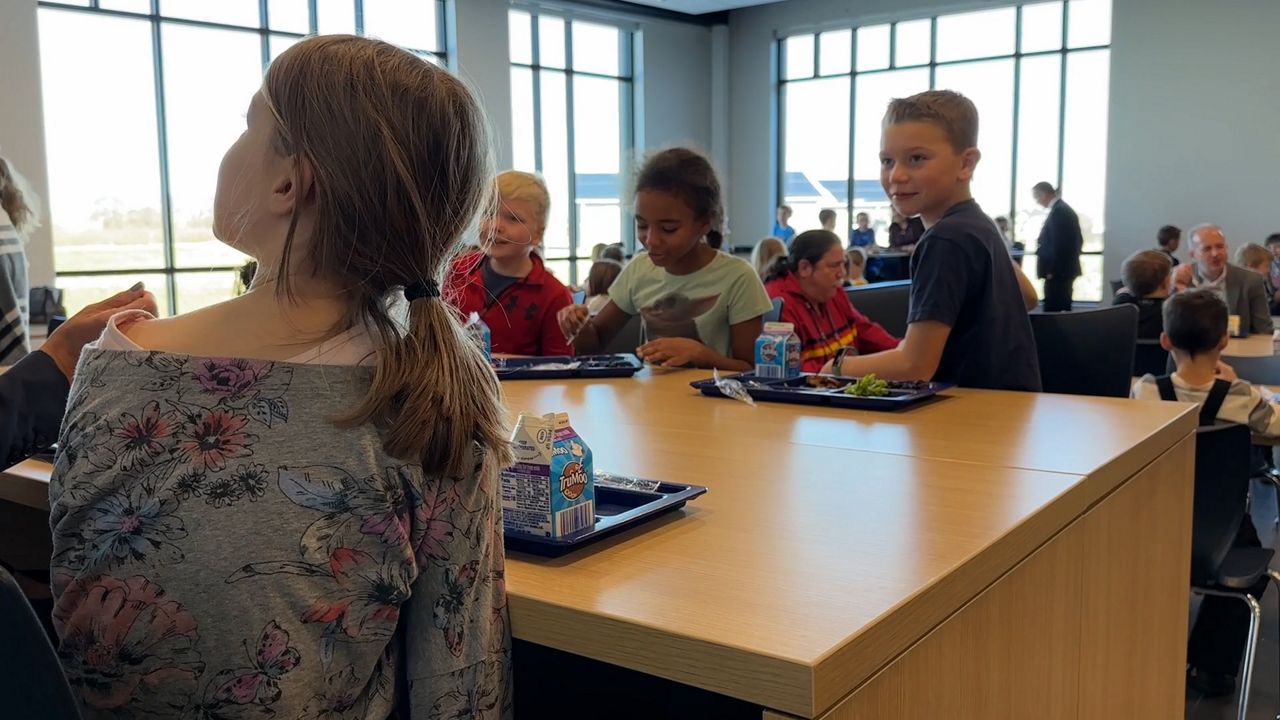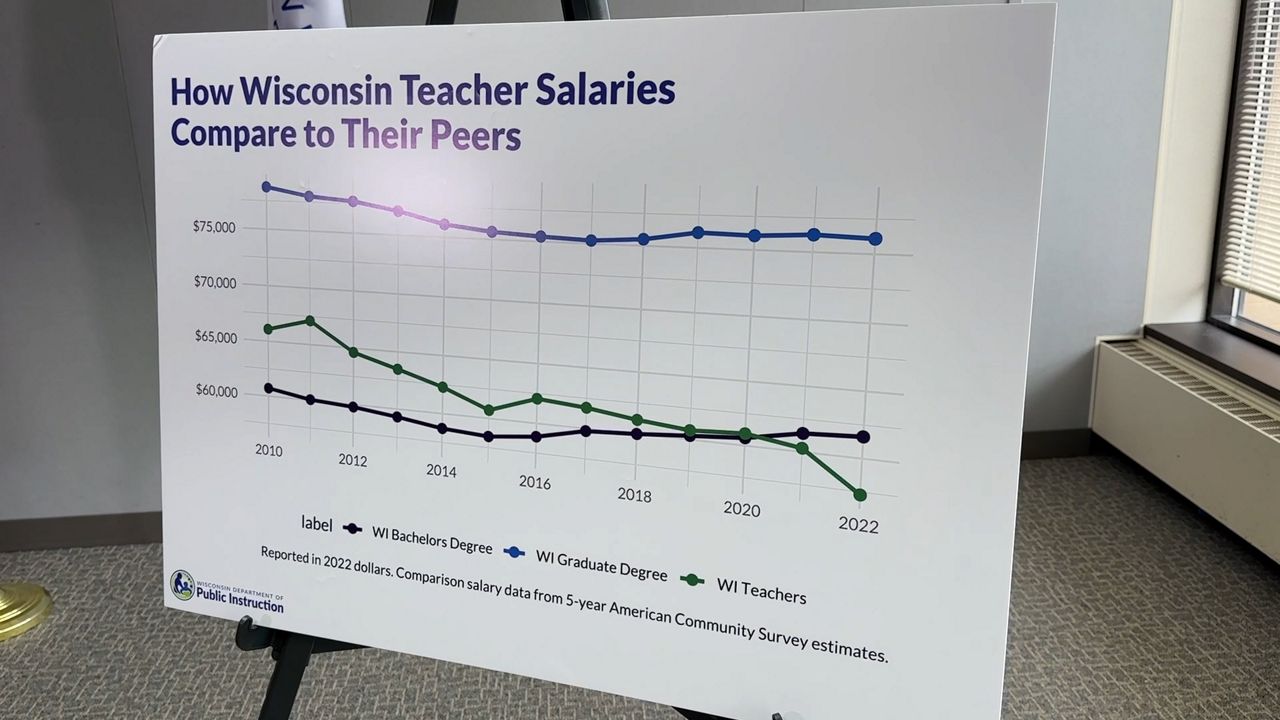MADISON, Wis. — On Thursday, higher education leaders gathered in Madison to bring attention to what they called an education workforce crisis.
They pointed to low pay, unrealistic workloads, a lack of support and anti-teacher rhetoric as just a few of the things that are driving the crisis.
A new report was released by the Department of Public Instruction on Thursday; it found Wisconsin educators continue to leave the state’s workforce at a high rate.
The report also found that educator compensation decreased by nearly 20% over the past 12 years, when held constant in 2022 dollars.
Wisconsin Education Association president Peggy Wirtz-Olsen teaches English and art in the School District of Marshfield.
“As a teacher, I know what is critically important to me is the success of the students in my classroom,” said Wirtz-Olsen.
She said many of her colleagues have to work two jobs just to get by.
“Burning the candle at both ends has an impact not just on those students in the classroom that we are all worried about, but also on their own mental wellbeing,” said Wirtz-Olsen.
The report found that teacher retention is the state’s biggest issue as almost 40% of teachers leave the profession after six years.
Wirtz-Olsen said this has a direct impact on students.
“Students suffer every time an educator leaves the profession; our schools are strong when we have the best educators working with our students every day,” said Wirtz-Olsen.

Jill Underly, the state superintendent, said a lack of pay for teachers and funding for public schools are playing a big part in the workforce crisis.
“For our teachers, for our students, the state needs to uphold its responsibility of appropriately funding our public schools,” said Underly. “This has led to cutting student programing opportunities, increasing class sizes and putting more and more on staff who are being compensated far less and less.”
She called on the Wisconsin Legislature to take action and inspire change.
“We can not wait another entire year until the next budget; we must demand that our elected leaders make the necessary investments in our public schools, in our students, in our educators,” said Underly.

Other key findings outlined in the report included:
- From 2021-2022, 71% of teachers were white females
- Special Education has the highest teacher needs
- Teacher salaries compared to other college graduates are dropping
- Based on the data presented in this report, Wisconsin is producing more teachers than are exiting due to retirements



